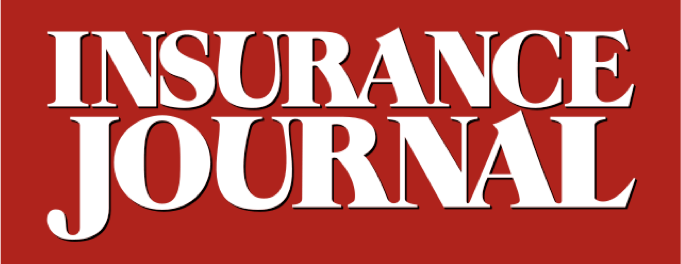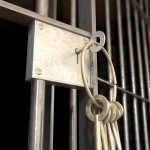Mark Gilmartin grew up around golf, playing in national tournaments from a young age and competing in college. When his amateur golf career didn’t translate into a spot on the professional tour, he turned his love of golf into a professional occupation: insuring hole-in-one contests.
Gilmartin and a former college teammate formed Hole In One International in 1991, a business that provides insurance for organizations sponsoring golf tournaments.
Hole-in-one shots and other sports-related contests are a common occurrence today, but when Gilmartin was getting the operation off the ground in the early 90s, few people believed it would catch on.
“We tried to raise some money; we put a business plan together,” said Gilmartin. “Everybody kind of laughed at us, saying that’s crazy.”
When another of Gilmartin’s ex-college teammates, Kirk Triplett, won $30,000 in a professional tournament, Triplett invested about $12,000 into the company to get it off the ground.
Before long, Hole In One International grew into one of the biggest programs of its kind. As demand grew for in-game contests like half-court basketball shots, Gilmartin’s business evolved into other sports.
In the early 2000s, Gilmartin founded Odds On Promotions. Odds On insures any skills-based contest from field goal kicks to fishing tournaments. The company also covers sweepstakes, like a win-a-car game that an auto dealership puts on.
Gilmartin added to his portfolio by purchasing a third brand, Hole in One USA, after the COVID-19 pandemic.
Gilmartin’s business is firmly at the center of the expanding and ever-changing world of prize indemnification insurance.
“The idea of prize indemnification, the idea of offering the chance to win a new car or a million dollars to do something has grown exponentially since it was just hole-in-one insurance in 1990,” said Gilmartin.
Not Your Standard Risk
There are three main types of risks in prize indemnity insurance.
The first is math-based risk, which is equivalent to flipping a coin and having a 50/50 chance of winning. “Pick an envelope off a wall out of a hundred envelopes,” said Gilmartin. “One is a winner; 99 aren’t.”
The second is skill-based risk, which includes the hole-in-one challenge, half-court shot, and field goal kick.
The third is odds-based risk, like whether a running back will score two touchdowns in an NFL game.
Gilmartin’s businesses cover all three types with a focus on writing skill-based risk. With more than three decades of experience, he and his team have formulated their own numbers on what the odds are of someone winning a contest.
“Somebody can make the half-court shot and it can cost us $5,000 or it could cost us a million dollars. It’s still one guy, one shot,” said Gilmartin. “That’s insurance in general, right? You take a large universe of all the risk and you boil it into one, and then it averages out in the end and hopefully you’ve built in some profit.”
Contests are priced differently based on how a client selects the contestant. If a client selects someone five minutes before they’re going to attempt a shot, that’s random selection. The person walked into the area with no notice they would be attempting a half-court shot for several thousand dollars.
“They might have high heels on, might be a grandma. They could be anybody,” said Gilmartin.
A different type of pricing is designed for clients who might hold a drawing in advance of a contest. Only the people that think they might win or want to do it are going to sign up.
“My grandma’s not going to sign up. Only the basketball jocks and those kinds of people are going to sign up, and then they get drawn and obviously they’ve got to be given notice that they’re going to do it,” said Gilmartin.
It’s not just hole-in-ones and half-court shots that the Reno, Nevada-based companies insure. Over the years, clients have come in the door with off-the-cuff skill-based contests. It’s up to the staff to do their own research on the probability of a contestant winning.
Once, a sausage festival in the Midwest wanted to run a sausage-throwing contest in which a sausage was thrown through a car window from a certain distance to win a car. Gilmartin and some coworkers determined the risk themselves, using a sausage-sized object and throwing it from the same distance through the same size opening. Nobody at the sausage festival won the contest.
“Those are the types of things that we have to [consider to] determine our own underwriting and our own probability,” said Gilmartin.
Close-Call Claims
For a hole-in-one contest, there is an independent observer–somebody who isn’t playing in the event and is there, designated in a certain location, to watch the contestants and make sure the ball went in the hole. For a basketball half-court shot, there must be video of the person taking the shot, where they release it, and whether it went in.
The majority of videos that come in are from clients themselves, as is part of the policy. One of the requirements of the client is that they need to clearly video the contest from certain places so the claims team can see everything they need to see.
“The bigger the prize is, the better the chance it’s being recorded on video,” Gilmartin said. “There’s always video out there to assist us in the claims process.”
Gilmartin said there’s always a physical presence at the contest to make sure a contest is conducted properly and to determine whether or not there was a legitimate winner. In some cases, they’ll send an adjuster to be there physically, while other times they’ll rely on the client to provide an independent observer.
Claims adjusters will peel over footage to see, for example, whether a contestant’s foot was right on the half-court line, in which case a claim could be deemed illegitimate if the policy states the contestant must be behind the line. Similarly, a claim could come down to whether a field goal was kicked in time or whether the clock had just expired.
The growth of smartphones and social media has made the claims process both easier and harder for the claims staff. The claims team has more videos it can potentially use to corroborate whether a contestant’s attempt was successful.
“I’ve got 10,000 witnesses taking a video of what actually happened, because all we’re after is the truth,” said Gilmartin. “Once we find the truth, we determine whether or not the claim is legitimate.”
The claims process is not all that different than NFL officials using instant replay technology to review a crucial call on the field. Like professional sports, when a decision doesn’t go the home team’s way, fans will complain about it online.
“That has happened a number of times over the years when the truth is black and white and they still think that the truth doesn’t matter, that you should pay anyway,” said Gilmartin. “That’s when social media can turn on us.”
While technology and on-site observers provide more tools than ever to determine a contest’s true outcome, the court of public opinion can still present a significant challenge for insurers in the prize indemnification space.
It’s all part of the game.
Was this article valuable?
Here are more articles you may enjoy.



 Twice Injured Firefighter Loses Second Workers’ Compensation Claim
Twice Injured Firefighter Loses Second Workers’ Compensation Claim  Former CEO of Nonprofit P/C Statistical Agent Sentenced for Stealing Millions
Former CEO of Nonprofit P/C Statistical Agent Sentenced for Stealing Millions  CEO Sentenced in Miami to 15 Years in One of the Largest Health Care Fraud Cases
CEO Sentenced in Miami to 15 Years in One of the Largest Health Care Fraud Cases  North Carolina Sting Operation Alleges Roofer Damaged Shingles to File Claim
North Carolina Sting Operation Alleges Roofer Damaged Shingles to File Claim 



